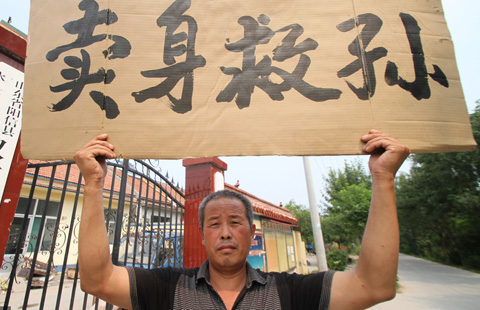City planning to dig deep to clear the air
By Zheng Jinran and Pei Pei in Baoding, Hebei (China Daily) Updated: 2013-01-24 03:31
 |
|
A family enjoys a comfortable indoor temperature by using a geothermal heating system in Xiongxian county, Baoding, Hebei province in January, 2010. [HU QINGMING / FOR CHINA DAILY] |
In Xiongxian alone, more than 63,000 metric tons of standard coal have been saved in heating, cutting emissions of carbon dioxide by 130,000 tons a year.
The Xiongxian government will invest 450 million yuan to expand the heating network and dig more geothermal wells by the end of 2020, making it a smoke-free county by then.
"The use of geothermal resources will not cause the groundwater level to decline, though thousands of tons of water have been pumped up for heating," said Huang Jiachao, a manager in charge of the project in Xiongxian under Sinopec Green Energy Geothermal Development.
He said the company adopted new technology that helps the groundwater flow back to its original level.
In China, geothermal resources are mainly used for heating and bathing. Some have been used to generate electricity in places such as the Tibet autonomous region.
More than 30 percent of the utilization is for spas and 20 percent for heating. Less than 0.4 percent has been used for electricity generation, Sinopec said.
"The utilization of this clean resource in China is still low," said Ingimar Haraldsson, a geothermal expert from the United Nations University.
"This resource can provide stable energy compared with solar and wind," he said. "More is needed for China."
Geothermal resources have played a big role in Iceland. Five major geothermal power plants exist there, which produce about 26 percent of the nation's energy, a report from the government said.
The Icelandic expert said his country once suffered from severe air pollution in the 1930s, but the wide use of geothermal resources cut emissions, giving the residents clean air and attracting tourists from all over the world.
Contact the writers at zhengjinran@chinadaily.com.cn and peipei@chinadaily.com.cn
- Xi: China backs stability and growth in Cambodia
- Li vows anew to ease market access
- Xi: China backs stability and growth in Cambodia
- Hopes rise as visit by Duterte set
- Xi stresses CPC leadership of state-owned enterprises
- New rules reduce conviction errors
- Smart technology to assist cancer treatment
- Li unveils measures to boost ties
- Two suspects held for abducting, raping 12-year-old Vietnamese girl
- China to optimize use of villa construction land











